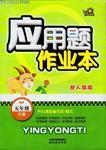ΧβΡΩΡΎ»ί
ΓΨΧβΡΩΓΩ«κΗυΨί“‘œ¬ΡΎ»ί–¥“ΜΤΣΈΡ’¬Ϋι…ή÷–ΙζΩΤ―ßΦ“«°―ß…≠ΓΘ
1.1911Ρξ…ζ”Ύ…œΚΘΘ§1935ΡξΗΑΟάΝτ―ßΘ§≥…Φ®”≈“λΘ§ ήΒΫΒ± ±ΒΡ÷χΟϊΩΤ―ßΦ“ΖκΓΛΩ®Ο≈(Von Karman)ΒΡ‘ό”ΰΘΜ
2.1938Ρξ‘ΎΟάΙζΜώΚΫΩ’ΓΔ ΐ―ß≤© Ω―ßΈΜΘΜ
3.1950ΡξΜώœΛ–¬÷–Ιζ≥…ΝΔΒΡœϊœΔΘ§ΩΥΖΰΝΥΟάΙζ’ΰΗ°ΒΡΑΌΑψΉηΡ”Θ§”Ύ1955ΡξΜΊΒΫΉφΙζΘΜ
4.1958ΡξΤπ≥ΛΤΎΒΘ»ΈΚΫΩ’ΚΫΧλ―–ΨΩΙΛΉςΘ§ΈΣ–¬÷–ΙζΒΡΚΫΧλ ¬“ΒΉω≥ωΨό¥σΒΡΙ±œΉΘ§±Μ”ΰΈΣΓΑ–¬÷–ΙζΚΫΧλ÷°ΗΗΓ±ΘΜ5.2009Ρξ”Ύ±±Ψ©»Ξ άΓΘ
Μώ≤© Ω―ßΈΜΘΚ obtain oneΓ·s doctorΓ·s degree
ΚΫΧλΩΤΦΦ : aerospace science and technology
ΈΣ......Ήω≥ωΨό¥σΒΡΙ±œΉ: contribute a lot to...
÷–ΙζΒΡΚΫΧλ ¬“Β:the cause of ChinaΓ·s areospace
______________________________________________________________________
______________________________________________________________________
______________________________________________________________________
______________________________________________________________________
______________________________________________________________________
______________________________________________________________________
ΓΨ¥πΑΗΓΩ
Qian Xuesen, regarded as the father of ChinaΓ·s space program, was born in 1911 in Shanghai.
In 1935, Qian went to America for further study and was highly thought of by Von Karman because of his great achievements. In 1938, he obtained his doctorΓ·s degree in aerospace science and mathematics in the US. In 1950, he heard New China had been founded and succeeded in coming back to his homeland in 1955 though the American government tried to stop him. Since 1958 he had been devoted to aerospace science and technology and contributed a lot to the cause of ChinaΓ·s aerospace and in 2009, he passed away in Beijing.
Because of the love for his country and the great achievements, he has received the respect and admiration from his people.
ΓΨΫβΈωΓΩ
‘ΧβΖ÷ΈωΘΚΕ‘”ΎΫι…ή»Υ…ζΤΫΒΡΈΡ’¬Θ§ΉΔ“βΧθάμ“Σ«εΈζΘ§Ω…“‘”Ο±μ Ψ ±ΦδΒΡΙΊΝΣ¥ Θ§»γin 1911Θ§two years later,after three years,when he was 50 years old»»ΓΘΉΔ“β±δΜΜ ±Φδ–π ωΒΡ–Έ ΫΘ§≤Μ“Σ“Μ÷±”Ο‘ΎΡ≥Ρ≥ΡξΖίΓΘΆ§ ±ΉΔ“βΈΡ÷–ΥυΗχΒΡ–≈œΔΘ§≤ΜΩ…“≈¬©Θ§Ω…“‘ΕύΫχ––“Μ–©≤Ι≥δΘ§ΨΓΝΩ±Θ≥÷ΨμΟφ’ϊΫύΘ§Ή÷ΧεΟάΙέΘ§ΉΔ“β––ΈΡΒΡΝ§Ια–‘ΓΘ ±Χ§ΘΚ”Ο“ΜΑψœ÷‘Ύ ±ΓΘΫαΙΙ…œΘΚΩ…≤…»ΓΉήΖ÷ΉήΡΘ ΫΓΘΨΓΝΩ Ι”Ο“Μ–©ΗΏΦΕΨδ–ΆΚΆ¥ ΜψΧα…ΐΉςΈΡΒΒ¥ΈΓΘΓΨΝΝΒψΥΒΟςΓΩ1ΓΔΈΡ’¬¬ω¬γΫαΙΙ«εΈζΘ§’ϊΧεΩρΦή―œΟήΓΘ–Έ ΫΆξ’ϊΘ§≤…”ΟΉήΖ÷Ήή–Έ ΫΓΘ ΉΕΈΫι…ή«°ΒΡ≥ω…ζΓΔΒΎΕΰΕΈΦ«–π…ζΤΫΨ≠άζΓΔΒΎ»ΐΕΈ…ΐΜΣΉήΫαΘ§ ΙΈΡ’¬Ηϋ”–ΧθάμΓΘ2ΓΔ‘Υ”ΟΫœΕύΗΏΦΕΕΧ”οΘ§±ήΟβΈΡ’¬œί»κΤΫ”ΙΒΡΖ÷ ΐΕΈΘ§»γΘΚwas highly thought of Θ®Εχ≤Μ «praiseedΘ©ΓΔgreat achievementsΘ®Εχ≤Μ «successΘ©ΓΔobtained his doctorΓ·s degree(obtainΕχ≤Μ «get) ΓΔsucceeded in coming backΓΔcontributed a lot toΘ®Εχ≤Μ «devoted toΘ© ΓΔreceived the respect and admiration fromΘ®”ΟadmirationΕχ≤Μ «loveΘ©Θ§ ΙΈΡ’¬ΗϋΦ”…ζΕ·Θ§Υυ“‘ΩΦ…ζ“Σ‘ΎΤΫ ±ΉΔ÷ΊΜΐάέΘ§’υ»ΓΡήΑ―ΗΏΦΕ¥ ΜψΜρ’ΏΕΧ”ο‘Υ”ΟΒΫΉ‘ΦΚΒΡΈΡ’¬÷–»ΞΓΘ3ΓΔ±δΜΜΨδ–ΆΘ§ΉΔ÷Ί ±Χ§ΓΘ»γ ΉΕΈΒΡΕ®”ο¥”ΨδQian Xuesen, regarded as the father of ChinaΓ·s space program, was born in 1911 in Shanghai. Θ§ΗχΕΝ’ΏΕζΡΩ“Μ–¬ΒΡΗ– ήΘ§Χεœ÷ΝΥΉς’ΏΗΏ≥§ΒΡ«≤¥ ‘λΨδΡήΝΠΘ§ ΙΕΝ’Ώ”–ΕΝœ¬»ΞΒΡ–Υ»ΛΓΘ»ΪΤΣ”Ο“ΜΑψΙΐ»Ξ ±Θ§Ά§ ±‘ΎΗω±πΨδΉ”÷–‘Υ”ΟΙΐ»ΞΆξ≥… ±Θ§»γSince 1958 he had been devoted to aerospace science ΙΈΡ’¬Ηϋ”–Υ°ΤΫΓΘ

 ”Π”ΟΧβΉς“Β±ΨœΒΝ–¥πΑΗ
”Π”ΟΧβΉς“Β±ΨœΒΝ–¥πΑΗ